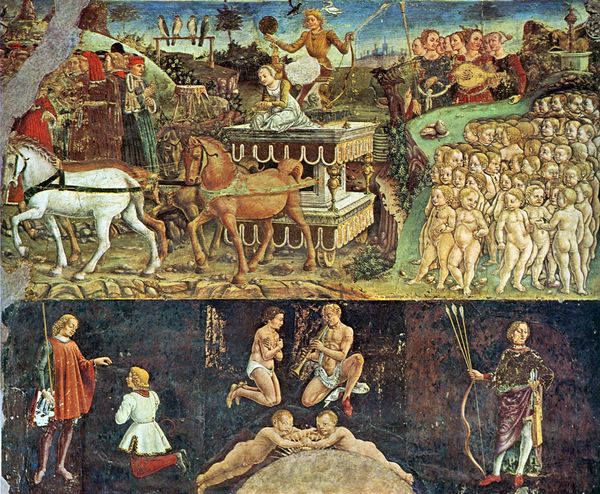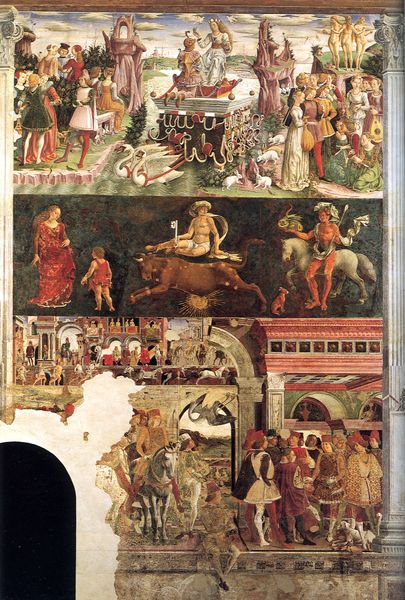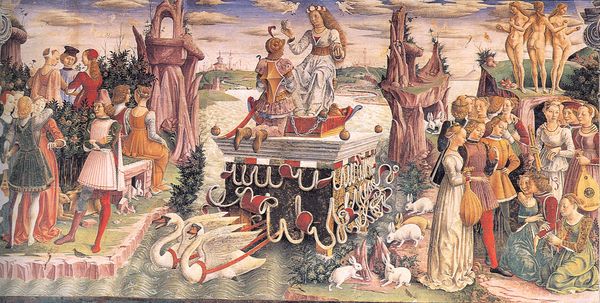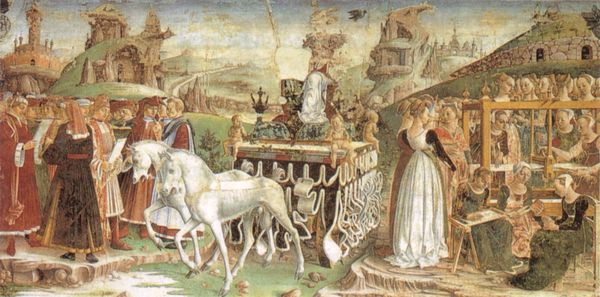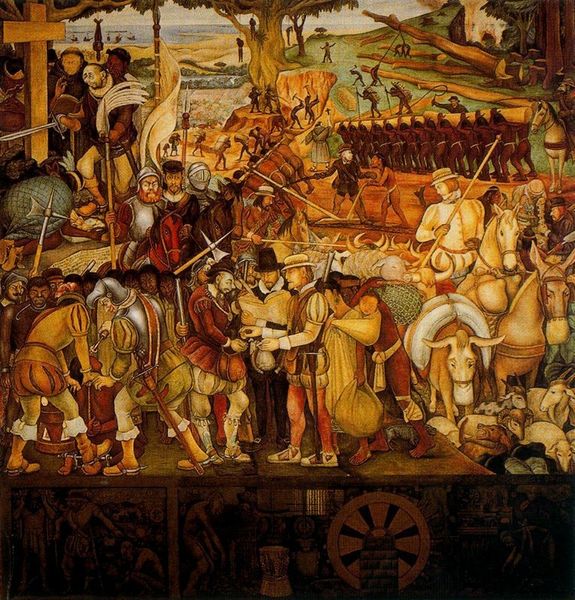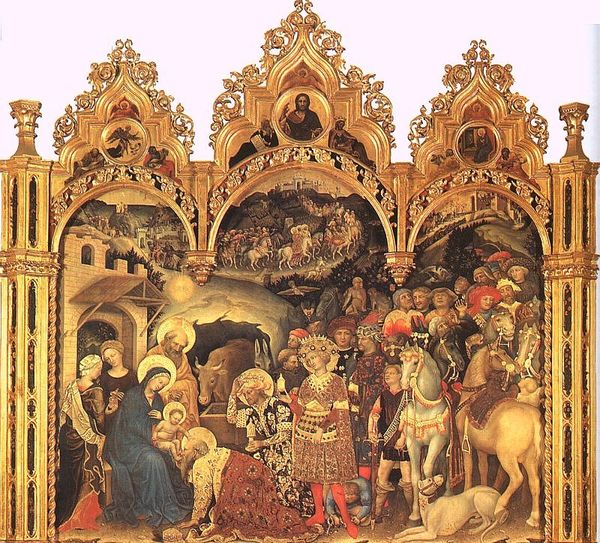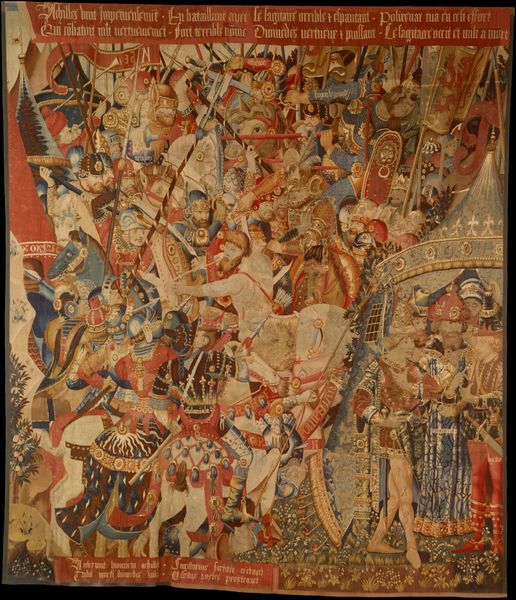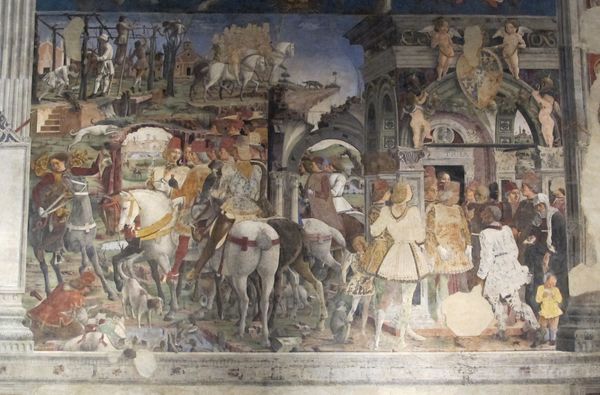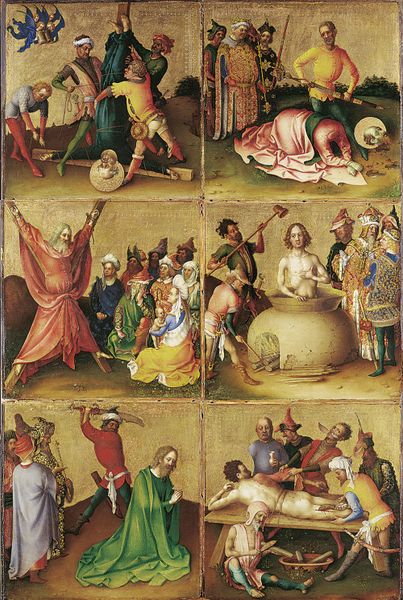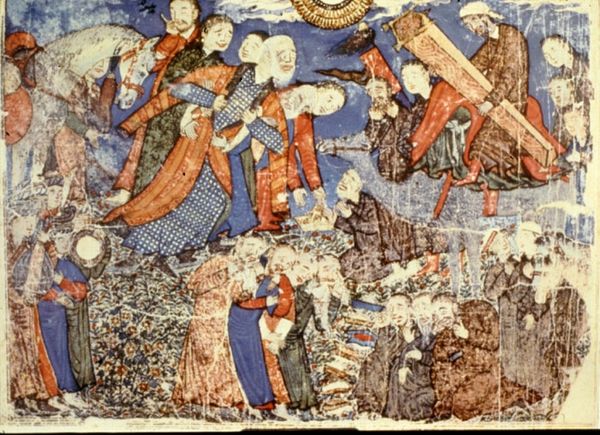
Allegory of March – Triumph of Minerva and Sign of Aries. Frescos in Palazzo Schifanoia 1470
0:00
0:00
painting, fresco, mural
#
allegory
#
painting
#
landscape
#
figuration
#
fresco
#
history-painting
#
academic-art
#
italian-renaissance
#
early-renaissance
#
mural
#
mixed media
Copyright: Public domain
Editor: Here we have Francesco del Cossa’s "Allegory of March – Triumph of Minerva and Sign of Aries," a fresco from 1470. There's so much happening, a real feast for the eyes! What strikes me is the tiered composition. It almost reads like different stages of a theatrical production. What do you see when you look at this work? Curator: It is interesting to consider it as theatrical because in a Materialist reading of this fresco, it’s less about the singular artistic genius, and more about the system that produced it. How does the patronage of the d’Este family, who commissioned this room, influence the materials and the very process of creation? Who were the laborers involved, from the pigment makers to the plasterers? Editor: That's a really different perspective! So, you're saying it’s less about Cossa’s individual creativity and more about… Curator: The social and economic conditions that made this possible. Fresco, by its very nature, is a communal art form, demanding the coordination of many hands. Think about the expense of ultramarine pigment made from lapis lazuli – its presence here speaks to a considerable investment of capital. What does that tell us about the priorities and the worldview of the ruling class? How might we read these pictorial displays as an investment in that class’ cultural capital? Editor: I never considered the value of the pigments before! And how fresco needed a whole team working on it together… That really changes the way I see it. It’s no longer just a beautiful painting, but evidence of a whole network of labor and resources. Curator: Exactly! The mural, tied to the wall in Palazzo Schifanoia, literally embodies how power structures of the time literally shaped cultural production. And maybe understanding those forces also reshapes how we evaluate such artwork today. Editor: Wow, I am walking away from this with such a changed idea about what makes art important and who does that importance belong to! Thank you!
Comments
No comments
Be the first to comment and join the conversation on the ultimate creative platform.
